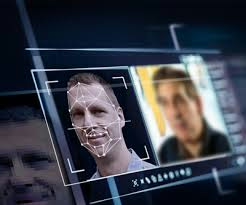A finance worker at a multinational company was tricked into transferring $25 million (about 200 million Hong Kong dollars) to fraudsters after participating in what they thought was a legitimate video conference call.
The scam involved:
- The worker initially received a suspicious message supposedly from the company’s UK-based CFO about a secret transaction
- Though initially skeptical, the worker’s doubts were overcome when they joined a video conference call
- Everyone on the call appeared to be colleagues they recognized, but all participants were actually deepfake recreations
- The scam was only discovered when the worker later checked with the company’s head office
Hong Kong police reported making six arrests connected to such scams. They also noted that in other cases, stolen Hong Kong ID cards were used with AI deepfakes to trick facial recognition systems for fraudulent loan applications and bank account registrations.
This case highlights the growing sophistication of deepfake technology and the increasing concerns about its potential for fraud and other harmful uses.
Analyzing Deepfake Scams: The New Frontier of Digital Fraud
The Hong Kong Deepfake CFO Case: A Sophisticated Operation
The $25 million Hong Kong scam represents a significant evolution in financial fraud tactics. What makes this case particularly alarming is:
- Multi-layered deception – The scammers created not just one convincing deepfake but multiple synthetic identities of recognizable colleagues in a conference call setting
- Targeted approach – They specifically chose to impersonate the CFO, a high-authority figure with legitimate reasons to request financial transfers.
- Social engineering – They overcame the victim’s initial skepticism by creating a realistic social context (the conference call) that normalized the unusual request.
The Growing Threat Landscape of Deepfake Scams
Deepfake-enabled fraud is expanding in several concerning directions:
1. Financial Fraud Variations
- Executive impersonation – Like the Hong Kong case, targeting finance departments by mimicking executives
- Investment scams – Creating fake testimonials or celebrity endorsements for fraudulent schemes
- Banking verification – Bypassing facial recognition and voice authentication systems
2. Identity Theft Applications
- As seen in the Hong Kong ID card cases, deepfakes are being used to create synthetic identities for:
- Loan applications
- Bank account creation
- Bypassing KYC (Know Your Customer) protocols
3. Technical Evolution
- Reduced technical barriers – Creating convincing deepfakes once required significant technical expertise and computing resources, but user-friendly tools are making this technology accessible.
- Quality improvements – The technology is rapidly advancing in realism, making detection increasingly tricky.
- Real-time capabilities – Live video manipulation is becoming more feasible
Why Deepfake Scams Are Particularly Effective
Deepfake scams exploit fundamental human cognitive and social vulnerabilities:
- Trust in visual/audio evidence – Humans are naturally inclined to trust what they see and hear
- Authority deference – People tend to comply with requests from authority figures
- Social proof – The presence of multiple, seemingly legitimate colleagues creates a sense of normalcy
- Security fatigue – Even security-conscious individuals can become complacent when faced with seemingly strong evidence
Protection Strategies
For Organizations
- Multi-factor verification protocols – Implement out-of-band verification for large transfers (separate communication channels)
- Code word systems – Establish private verification phrases known only to relevant parties
- AI detection tools – Deploy technologies that can flag potential deepfakes
- Training programs – Educate employees about these threats with specific examples
For Individuals
- Healthy skepticism – Question unexpected requests, especially those involving finances or sensitive information
- Verification habits – Use different communication channels to confirm unusual requests.
- Context awareness – Be especially vigilant when urgency or secrecy is emphasised.
- Technical indicators – Look for inconsistencies in deepfakes (unnatural eye movements, lighting inconsistencies, audio-visual misalignment)
The Future of Deepfake Fraud
The deepfake threat is likely to evolve in concerning ways:
- Targeted personalization – Using information gleaned from social media to create more convincing personalized scams
- Hybrid attacks – Combining deepfakes with other attack vectors like compromised email accounts
- Scalability – Automating parts of the scam process to target more victims simultaneously
As this technology continues to advance, the line between authentic and synthetic media will become increasingly blurred, requiring both technological countermeasures and a fundamental shift in how we verify identity and truth in digital communications.
What Are Deepfake Scams?
Deepfake scams involve using artificial intelligence (AI) technology to create highly convincing fake voice recordings or videos that impersonate real people. The goal is typically to trick victims into transferring money or taking urgent action.
Key Technologies Used

- Voice cloning: Requires just 10-15 seconds of original audio
- Face-swapping: Uses photos from social media to create fake video identities
- AI-powered audio and video manipulation
How Scammers Operate
Emotional Manipulation
Scammers exploit human emotions like:

- Creating Urgency: The primary goal is to make victims act quickly without rational thought.
Real-World Examples
- In Inner Mongolia, a victim transferred 4.3 million yuan after a scammer used face-swapping technology to impersonate a friend during a video call.
- Growing concerns in Europe about audio deepfakes mimicking family members’ voices

How to Protect Yourself
Identifying Fake Content
- Watch for unnatural lighting changes
- Look for strange blinking patterns
- Check lip synchronization
- Be suspicious of unusual speech patterns
Safety Practices
- Never act immediately on urgent requests
- Verify through alternative communication channels
- Contact the supposed sender through known, trusted methods
- Remember: “Seeing is not believing” in the age of AI

Expert Insights
“When a victim sees a video of a friend or loved one, they tend to believe it is real and that they are in need of help.” – Associate Professor Terence Sim, National University of Singapore
Governmental Response
Authorities like Singapore’s Ministry of Home Affairs are:
- Monitoring the technological threat
- Collaborating with research institutes
- Working with technology companies to develop countermeasures
Conclusion
Deepfake technology represents a sophisticated and evolving threat to personal and financial security. Awareness, skepticism, and verification are key to protecting oneself.
What Are Deepfake Scams?

Deepfake scams involve using artificial intelligence (AI) technology to create compelling fake voice recordings or videos that impersonate real people. The goal is typically to trick victims into transferring money or taking urgent action.
Key Technologies Used
- Voice cloning: Requires just 10-15 seconds of original audio
- Face-swapping: Uses photos from social media to create fake video identities
- AI-powered audio and video manipulation
How Scammers Operate
- Emotional Manipulation Scammers exploit human emotions like:
- Fear
- Excitement
- Curiosity
- Guilt
- Sadness
- Creating Urgency: The primary goal is to make victims act quickly without rational thought.

Real-World Examples
- In Inner Mongolia, a victim transferred 4.3 million yuan after a scammer used face-swapping technology to impersonate a friend during a video call.
- Growing concerns in Europe about audio deepfakes mimicking family members’ voices
How to Protect Yourself
Identifying Fake Content
- Watch for unnatural lighting changes
- Look for strange blinking patterns
- Check lip synchronization
- Be suspicious of unusual speech patterns
Safety Practices
- Never act immediately on urgent requests
- Verify through alternative communication channels
- Contact the supposed sender through known, trusted methods
- Remember: “Seeing is not believing” in the age of AI

Expert Insights
“When a victim sees a video of a friend or loved one, they tend to believe it is real and that they are in need of help.” – Associate Professor Terence Sim, National University of Singapore
Governmental Response
Authorities like Singapore’s Ministry of Home Affairs are:
- Monitoring the technological threat
- Collaborating with research institutes
- Working with technology companies to develop countermeasures
Conclusion

Deepfake technology represents a sophisticated and evolving threat to personal and financial security. Awareness, skepticism, and verification are key to protecting oneself.
Maxthon
Maxthon has set out on an ambitious journey aimed at significantly bolstering the security of web applications, fueled by a resolute commitment to safeguarding users and their confidential data. At the heart of this initiative lies a collection of sophisticated encryption protocols, which act as a robust barrier for the information exchanged between individuals and various online services. Every interaction—be it the sharing of passwords or personal information—is protected within these encrypted channels, effectively preventing unauthorised access attempts from intruders.
Maxthon private browser for online privacyThis meticulous emphasis on encryption marks merely the initial phase of Maxthon’s extensive security framework. Acknowledging that cyber threats are constantly evolving, Maxthon adopts a forward-thinking approach to user protection. The browser is engineered to adapt to emerging challenges, incorporating regular updates that promptly address any vulnerabilities that may surface. Users are strongly encouraged to activate automatic updates as part of their cybersecurity regimen, ensuring they can seamlessly take advantage of the latest fixes without any hassle. Maxthon Browser Windows 11 support
In today’s rapidly changing digital environment, Maxthon’s unwavering commitment to ongoing security enhancement signifies not only its responsibility toward users but also its firm dedication to nurturing trust in online engagements. With each new update rolled out, users can navigate the web with peace of mind, assured that their information is continuously safeguarded against ever-emerging threats lurking in cyberspace.

